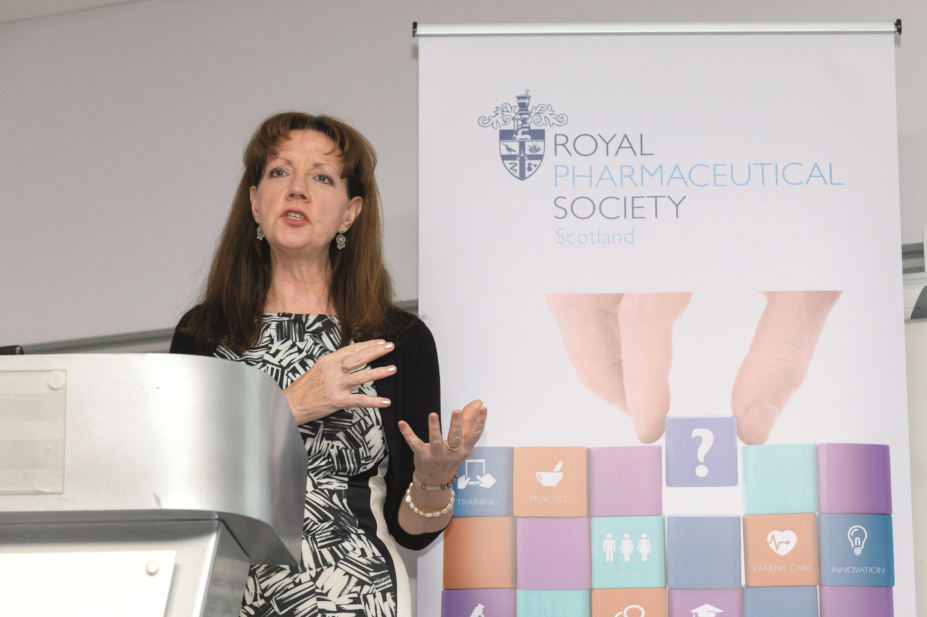
Mark Ferguson / Royal Pharmaceutical Society
Pharmacists should work with their social care and nursing colleagues to help “bring sense” to prescribing in care homes, Rose Marie Parr, Scotland’s chief pharmaceutical officer, told delegates at the 2017 RPS Scottish National Seminar.
One of nine commitments in the Scottish Government’s recently published pharmacy strategy
Achieving Excellence in Pharmaceutical Care calls for improved pharmacy care in care homes and Parr said medicines waste in care homes must be addressed.
“A lot of our population are ending up on medicines that they don’t need or want, but they find it difficult to have the voice to say that,” she said.
Parr told delegates at the seminar, which took place in Stirling on 30 September and 1 October 2017, of her own experiences as a hospital pharmacist when discussing another of the pharmacy strategy’s commitments, to transform hospital pharmacy services.
“When I was in hospital pharmacy it was different. We had time to take care of patients; to look at discharge planning,” she said.
Now, with the average hospital stay being just over two days, Parr said hospital pharmacists had little time to look at medicines reconciliation or carry out discharge planning.
“How do we have time to care? To use the skills, knowledge, and advanced practice that hospital pharmacists have? To move those skills around the system and work with colleagues? I don’t know the answer, but some of it lies in redesign of aspects of scheduled care and secondary care,” she said.
Parr also said that improvements to Scotland’s “clunky” pharmaceutical IT systems were needed, saying that the nation needed to “move into the 21st century”.
Outlining another of the commitments, “Improved service delivery through digital information and technologies”, she emphasized the need for access to patient health records, and said that better use of IT was needed to reach patients living in remote and rural parts of Scotland.
Many deprived communities in remote and rural areas have no access to pharmaceutical care, or any primary care, Parr said, with consequent issues around delivering minor ailments services, support for long-term conditions, and general pharmaceutical advice.
“How we can reach people?” she asked. “Surely, when we have smartphones, we can do better working with these patients.”
Parr also asked how the 1256 community pharmacies in Scotland’s high streets can become “pharmaceutical care ready — to be more about patient-facing care, and being able to give that time to care? Times are challenging, everything’s about money — how do we make it much more about the patient?
“Some of that will be our negotiations around how we bring the pharmaceutical care contract forward,” she said.
Offering her thanks to those pharmacists who had already “started the narrative around quality improvement, and started to look at patient safety”, Parr said that the she wanted to bring some of that conversation that has already happened in acute care and general practice into the community pharmacy arena.
Scotland, she said, had the advantage of comparatively low population numbers, among both patients and the pharmaceutical workforce.
“With 5000 pharmacists and 2000 technicians, we kind of all know each other,” she said
“We need to build on the enthusiasm of pharmacists, pharmaceutical technicians and staff across Scotland, and build on our capacity in the workplace.
“Nothing in Achieving Excellence in Pharmaceutical Care is new — it is about building on what we already have,” she concluded.


